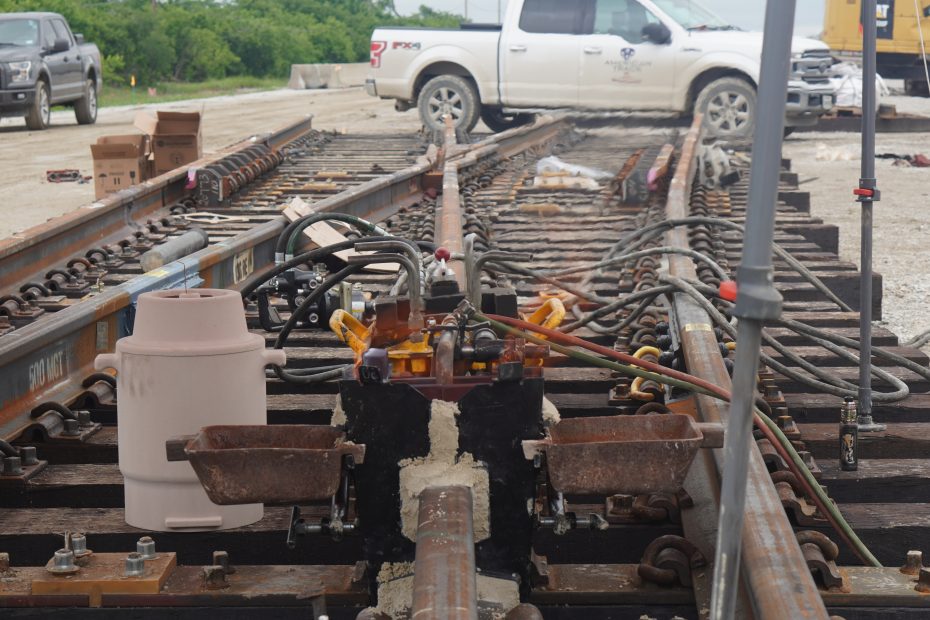Transport and logistics companies that utilize railways understand how important it is to keep them in good repair. When railways are in disrepair, it can cause significant delays in the transport of goods.
And with supply chain issues already seemingly here to stay, you need every advantage when it comes to speed. Delays can cost money and affect safety. In this blog post, we will take a look at what goes into the rehabilitation of railway tracks and what you can do to stay on top of yours. All aboard!
Leveling Tracks
One of the most important aspects of rehabilitating railway tracks is ensuring they are level. It is important to do so because if they are not, it can cause delays in the transport of goods.
If the tracks are not level, it can also cause safety issues. In order to achieve this, railroad track workers use a process called tamping.
Tamping is an important part of the track rehabilitation process. It helps to compact the ballast and ensure that the track is level. Tamping is performed using a tamping machine.
This machine has a set of arms that are lowered onto the track. The arms have rollers on them that rotate and compact the ballast. The tamping machine also has a gauge that helps to ensure that the track is level.
After the ballast has been compacted, it is then checked for abnormalities. If any are found, they are repaired before the track is reopened to traffic. Tamping is a vital part of the track rehabilitation process because it helps to ensure the safety of trains, passengers, and cargo.
Track Alignment
In addition to making sure that the tracks are level, it is also important to make sure that they are properly aligned. This means that the rails should be perpendicular to the railroad ties.
If the rails are not correctly aligned, it can cause trains to derail. To fix this problem, railroad track workers use a process called realignment. Realignment is when workers adjust the position of the rails so that they are perpendicular to the railroad ties.
The realignment process in track rehabilitation is a critical step in returning the track to its original position. This is usually done by first removing the existing track and then digging out the area around the track bed.
Once the area is cleared, the new track is installed and leveled. To ensure that the track is level, special equipment is used to measure the elevation of the track bed.
The realignment process is important because it helps to ensure that the track is able to function properly after it has been rehabilitated.
Railway Ventilation
Finally, another important aspect of rehabilitating railway tracks is ensuring they are well-ventilated. Proper ventilation helps to prevent water from seeping into and damaging railway tracks.
To achieve proper ventilation, railroad track workers use a process called drainage. Drainage is when workers clear out any debris or obstructions that might be blocking ventilation holes along the length of the railway tracks.
Wooden tracks require more ventilation than concrete or asphalt tracks. Weather conditions must be taken into account. Ventilation is more important on hot days than on cool days.
In most cases, the goal is to remove heat and moisture from the track surface. However, in some cases, such as when dealing with a chemical spill, the goal may be to remove toxic fumes from the air.
There are many different types of ventilation equipment that can be used for track rehabilitation, but not all of them are equally effective. Fans, for example, can create a strong airflow that can help to remove heat and moisture from the air. However, they are not very effective at removing toxic fumes.
Air compressors are more effective here, but they are not as effective at removing heat and moisture. For this reason, it is important to choose the right type of ventilation equipment for the job at hand or to work with a company that’s skilled at track rehabilitation.
Track Care Is Essential to the Supply Chain
As you can see, a lot goes into rehabilitating railway tracks. The process is complex and requires a great deal of skill and experience. Transport and logistics companies should only entrust this task to qualified companies like American Track.
Our “track” record when it comes to rehabilitation is second to none. Contact us today if we can help rehab any of your existing lines, or let us know if you have a new project that needs TLC from conception to construction.


